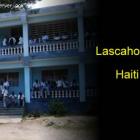United States history of maritime interdiction particularly Haitian Boat People
ADVERTISEMENT
Such levels of security are enforced to manage drug trafficking, smuggling, weapons transport, as well as illegal entry. The agreement is strong that the U.S. fully exercised its authority.
A point of conflict is non-refoulement. When the U.S. Coast Guard became overwhelmed with the sheer volume of Haitian migrants, instead of assessing the refugee status of the ship, the boat was simply pushed back to Haiti. In 1993, this method was challenged in U.S. Supreme Court in Sale v. Haitian Centers Council. The court determined the laws did not apply to the high seas. However, the European Court of Human Rights decided the opposite in the 2012 case between Italy and Libya, in which refugees were returned to Libya. Italy was fined and made to pay reparations to each individual.
A source of contention, these cases will set precedence for future conflicts of interest regarding the forcible return of migrant vessels and assist in determining a humane outcome for all involved.
Read more: immigration, Boat People, Illegal Immigration, immigration
« Edwidge Danticat and the Haitian Immigrant Experience | Main | Turks and Caicos to use drone to fight Haitian illegal immigration »
Leave a Reply
Name (required) E-mail (required, will not be published)
» »
Our objective is to share with you news and information about Haiti and the people of Haiti. Traditions, habits and the way we were or grew are alive in this site. We highly recommend that you Subscribe to our Newsletter and also share with us some of the things that are memorable and made us unique people.


 Saint Michel de L 'Atalaye
Saint Michel de L 'Atalaye  La Chapelle, Haiti
La Chapelle, Haiti  Haitian Creole Translation
Haitian Creole Translation  Lascahobas, Haiti
Lascahobas, Haiti  Haiti tech Summit
Haiti tech Summit